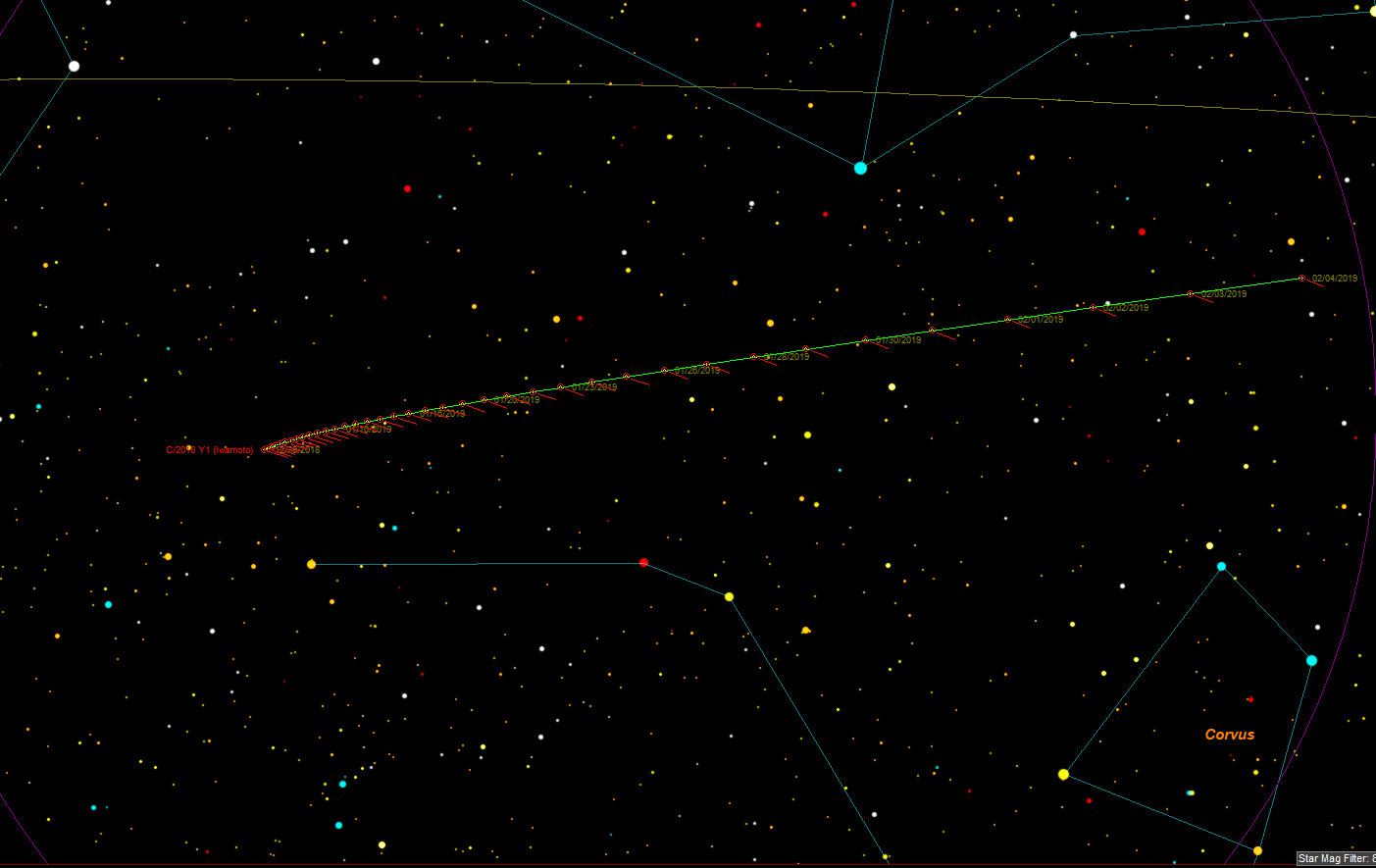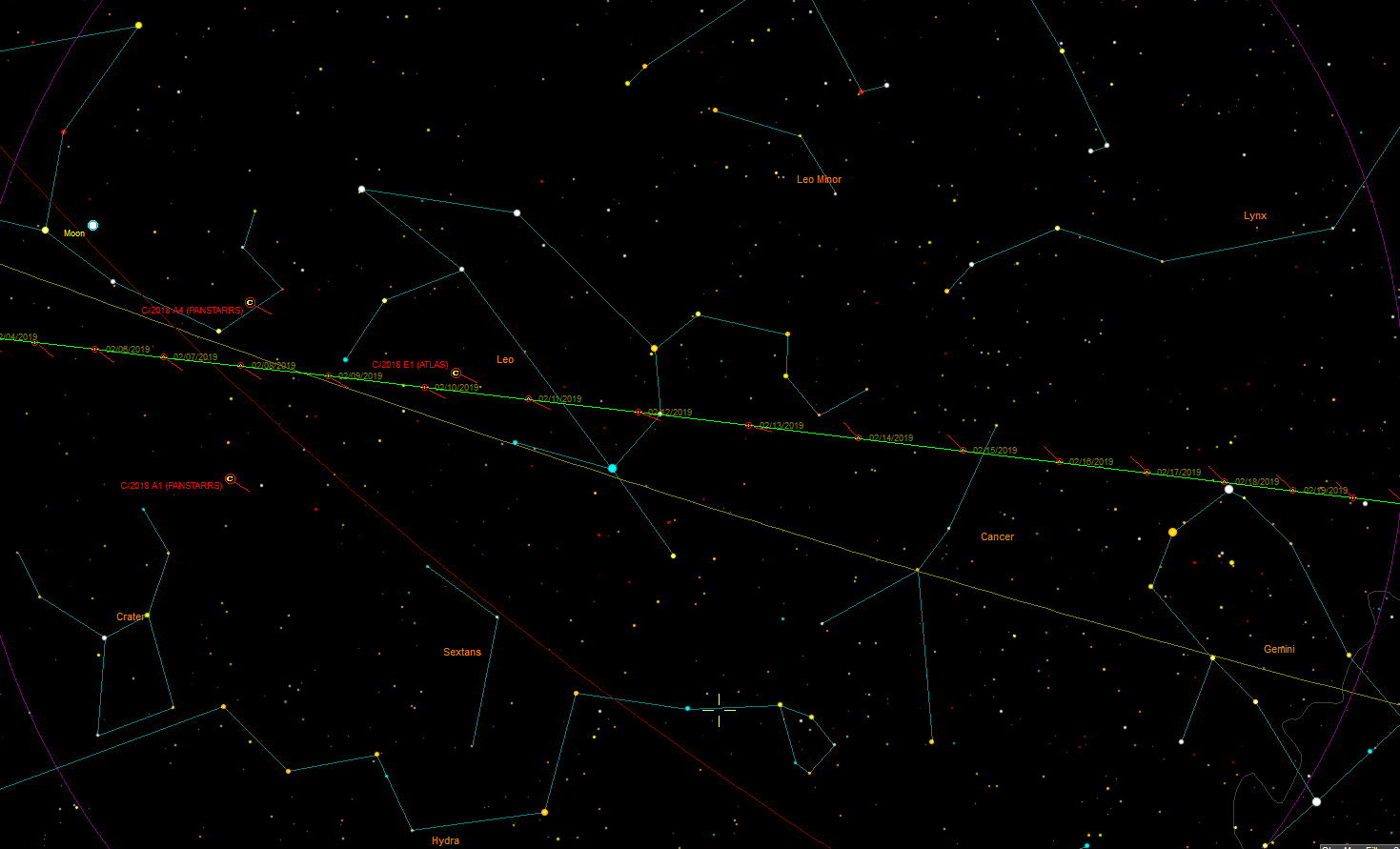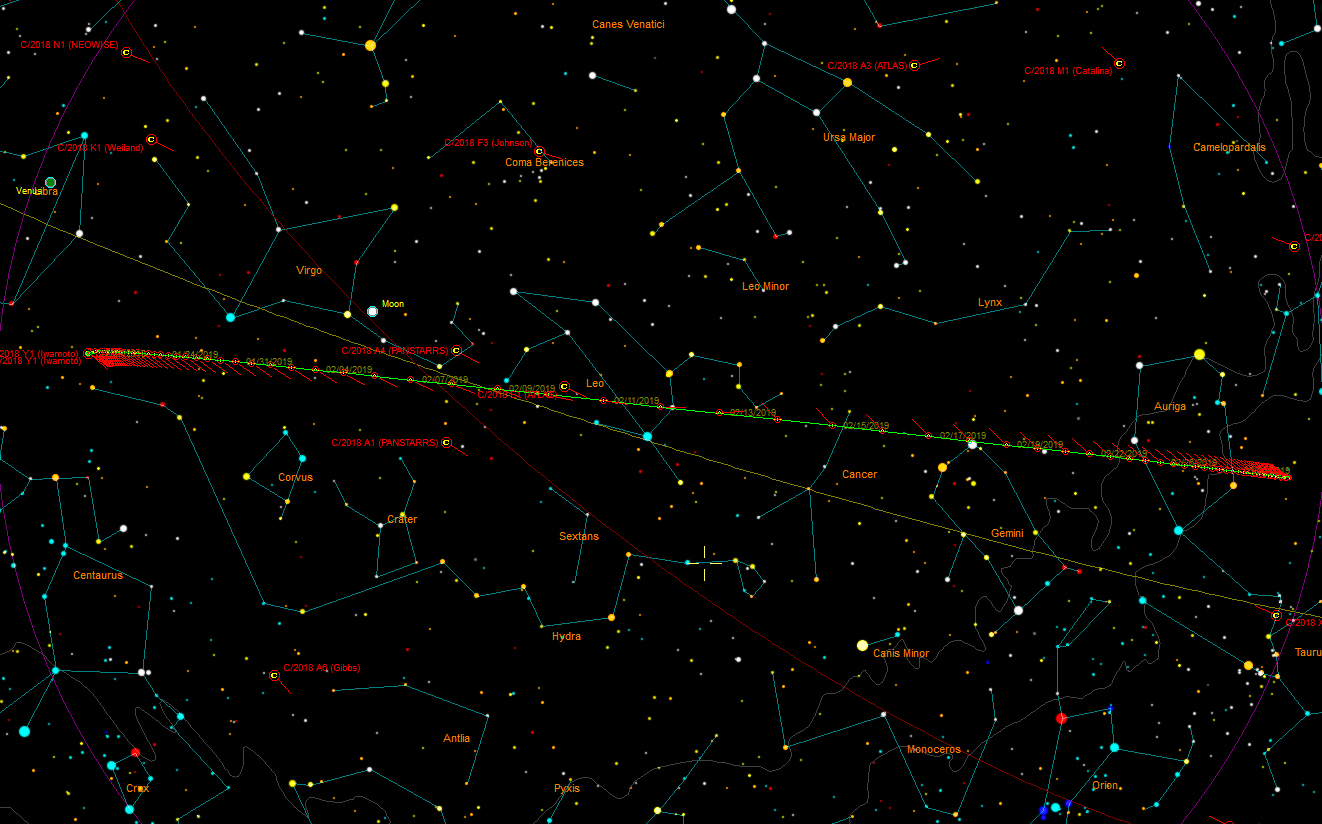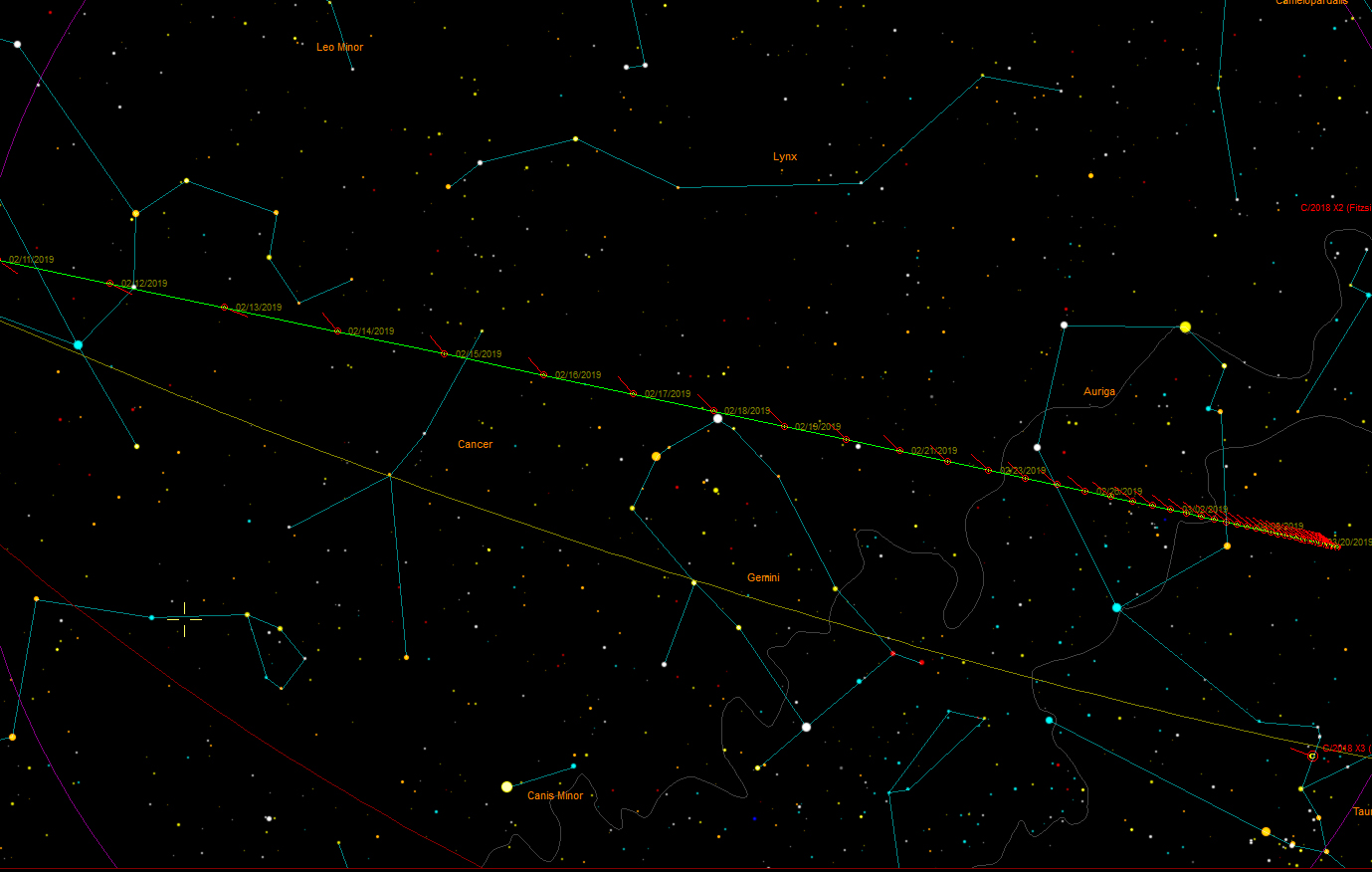For a printable version of this page, CLICK THIS LINK.
Another comet of interest was discovered on the 18th of December by Japanese astronomer Masayuki Iwamoto.
Comet C/2018 Y1 (Iwamoto) is a fast-moving comet passing closest to Earth around the 11th of January. It will still be at least 28 million miles from Earth at it’s closest.
It’s estimated maximum brightness will be between +7.5 and +8.9. Although not that bright, it should be easily visible in binoculars or a small telescope and make a great photographic subject.
The chart below shows the path of the comet against the star background over the next 3 months.
The map below shows the comet’s path during the first part of January until the beginning of February.
The map below shows the path of the comet throughout January, into February.

On the 3rd of February, the comet passes a couple of degrees north of The Sombrero Galaxy Messier 108.
On the 10th and 11th of February the comet will pass fairly close to the three Messier galaxies, M95, M96 and M105.
This will make a great photographic opportunity, especially as the comet will be at its brightest but it will be moving at its quickest around this time. The Moon will be just before 1st Quarter, so stay up late into the early hours after Moonset when the comet is high in the sky.
On the 12th of February, the comet will by now have moved considerably and will lie fairly close to the bright +3.6 magnitude star Eta (η) Leonis, situated within The Sickle of Leo.
The Moon will be at First Quarter on this evening.
Passing through the northern part of Cancer mid-February, by the 18th of February the comet will be found close to the 1st magnitude star Castor in Gemini, making it very easy to find.
This map shows the path of the comet towards the end of February into March 2019.
By the 27th of February, the comet, now fading considerably, will have moved into Auriga. It passes between the bright open clusters M38 and M36 on this date, making another great photographic opportunity. The Moon will be just after last quarter this day, so will not rise until the early hours.
How this comet will actually perform and how bright it might become is anyone’s guess.
After all, it is a comet.
The only way to tell for sure is to out there and enjoy this new comet and whatever it brings us.
Dave
For a printable version of this page, CLICK THIS LINK.


